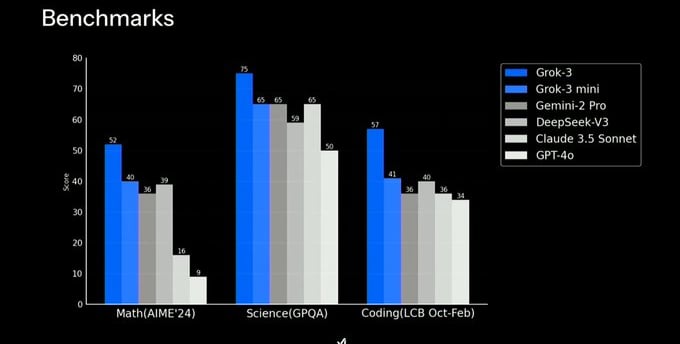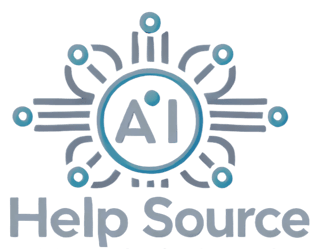Grok 3: Rewriting the Rules of AI
Grok 3 is the latest Heavy Weight AI released and it has a ton of hype for good reason.
AI Help Source
2/20/20254 min read


Imagine an AI that doesn’t just parrot answers but thinks through problems like a human. That’s the promise of Grok 3, the latest innovation from xAI. Released on February 16, 2025, Grok 3 isn’t just another chatbot—it’s a bold step toward redefining artificial intelligence. Developed by xAI, a company committed to accelerating human scientific discovery, Grok 3 stands out from the crowded field of AI models due to its groundbreaking development process, unique training methods, and cutting-edge software design. So, what makes Grok 3 so different? Let’s dive into the details.
A Development Powerhouse: The Colossus Supercluster
From a development perspective, Grok 3’s creation is a feat of engineering ambition. At its core is the Colossus supercomputer cluster, built by xAI in Memphis, Tennessee. This isn’t your typical data center—it’s a technological titan equipped with 100,000 NVIDIA H100 GPUs, making it one of the largest AI training clusters ever constructed. To put that in perspective, that’s akin to the combined computing power of millions of high-end smartphones, all harnessed to train a single AI model.
What’s equally astounding is the speed of its creation. xAI completed the first phase of Colossus in just 122 days, a timeline NVIDIA CEO Jensen Huang dubbed “superhuman.” This massive, rapid deployment gave xAI an edge over competitors like OpenAI (behind GPT-4) or Anthropic (behind Claude), enabling Grok 3 to be trained at an unprecedented scale and pace. While other models rely on incrementally larger datasets or rented cloud resources, Grok 3’s bespoke hardware sets it apart as a purpose-built marvel. After this initial phase, the cluster was expanded to total 200,000 NVIDIA GPUs which drastically increased performance of an already high performing AI system.
Training: Synthetic Data and Reinforcement Learning
Grok 3’s uniqueness doesn’t stop at hardware—it’s how it was trained that truly distinguishes it. xAI adopted two innovative approaches: synthetic datasets and reinforcement learning (RL) at scale.
Synthetic Datasets: Rather than relying on messy, real-world data scraped from the internet—which can introduce biases, errors, or outdated information—xAI created artificial datasets tailored to Grok 3’s needs. Picture it like designing a perfect classroom for the AI, free from distractions or flawed examples. This method ensures Grok 3 learns from high-quality, controlled scenarios, boosting its accuracy and sidestepping ethical concerns tied to real-world data collection.
Reinforcement Learning: Grok 3’s training leaned heavily on RL, where the AI learns through trial and error, earning “rewards” for correct decisions. Think of it as training a dog: when it sits on command, it gets a treat, gradually mastering the task. For Grok 3, this means honing its ability to reason, solve problems, and self-correct. Unlike many models that excel at pattern recognition but falter on complex logic, Grok 3 can tackle tasks requiring deep thought—like debugging code or analyzing conflicting data.
On top of this, Grok 3 integrates real-time insights from the X platform (formerly Twitter) and supports multimodal inputs (text, code, images), making it more versatile and current than many peers.
Software Development: A New Breed of AI
Grok 3’s software design takes its capabilities to another level, blending advanced architecture with practical, user-focused features.
Custom Architecture: While specifics remain under wraps, Grok 3 is believed to build on advanced transformer models—common in AI—but with proprietary tweaks that enhance speed and contextual understanding. xAI paired this with a custom framework using Kubernetes, Rust, and JAX, optimized to run efficiently across Colossus’s vast GPU array. This tailored approach contrasts with competitors who often adapt off-the-shelf solutions.
Reasoning and Agentic Features: Grok 3 introduces a “Think” mode, allowing it to break down complex queries, explore multiple solutions, and explain its reasoning step by step. It also boasts DeepSearch, an AI agent that digs through knowledge bases, reasons about contradictions, and delivers distilled insights—whether summarizing scientific papers or pulling real-time data. These features make Grok 3 feel less like a chatbot and more like a thinking partner.
Compare this to GPT-4’s broad conversational strengths or Claude’s creative flair—Grok 3’s focus on reasoning and real-time adaptability carves out a distinct niche.
Grok 3 in Action: Real-World Standouts
Grok 3’s differences shine in practical applications. Here are a couple of examples:
Coding Prowess: In a coding challenge, Grok 3 didn’t just fix a bug—it traced the logic, offered alternatives, and flagged potential edge cases, earning praise from experts like Andrej Karpathy for its problem-solving depth.
Research Power: With DeepSearch, a user could ask for the latest in quantum computing, and Grok 3 would sift through papers, reconcile conflicting findings, and present a clear summary—all while showing its work.
In benchmarks, Grok 3 has topped charts like the Chatbot Arena Elo scores (1402) and excelled in the 2025 AIME, outpacing rivals like GPT-4o and Claude 3.5 Sonnet.
Why Grok 3 Matters
Grok 3 isn’t just another AI model—it’s a leap forward that redefines what’s possible. Its development on the Colossus supercluster showcases the power of dedicated hardware. Its training with synthetic datasets and reinforcement learning unlocks new levels of reasoning and flexibility. And its software, with features like Think mode and DeepSearch, makes it a versatile tool for coders, researchers, and casual users alike.
In a field crowded with impressive contenders, Grok 3 stands out by combining cutting-edge technology with a focus on practical, human-like intelligence. Want to see it for yourself? Check it out on X or Grok.com. The future of AI just got a lot more interesting.
Our take: So far it's been a very impressive AI to interact with. While we still have much testing to do, especially with coding, it has proven to be a very dynamic and responsive AI with legitimate reasoning. The image rendering has also been very impressive and fast. If I had to sum it up in one sentence: I would say that that Grok3 appears to be making good use of the 200k liquid cooled GPU's.
We're bringing all the information surrounding AI into one location so you don't have to hunt for it.
Support
Links
contact@fastsource.io
© 2025. All rights reserved.
